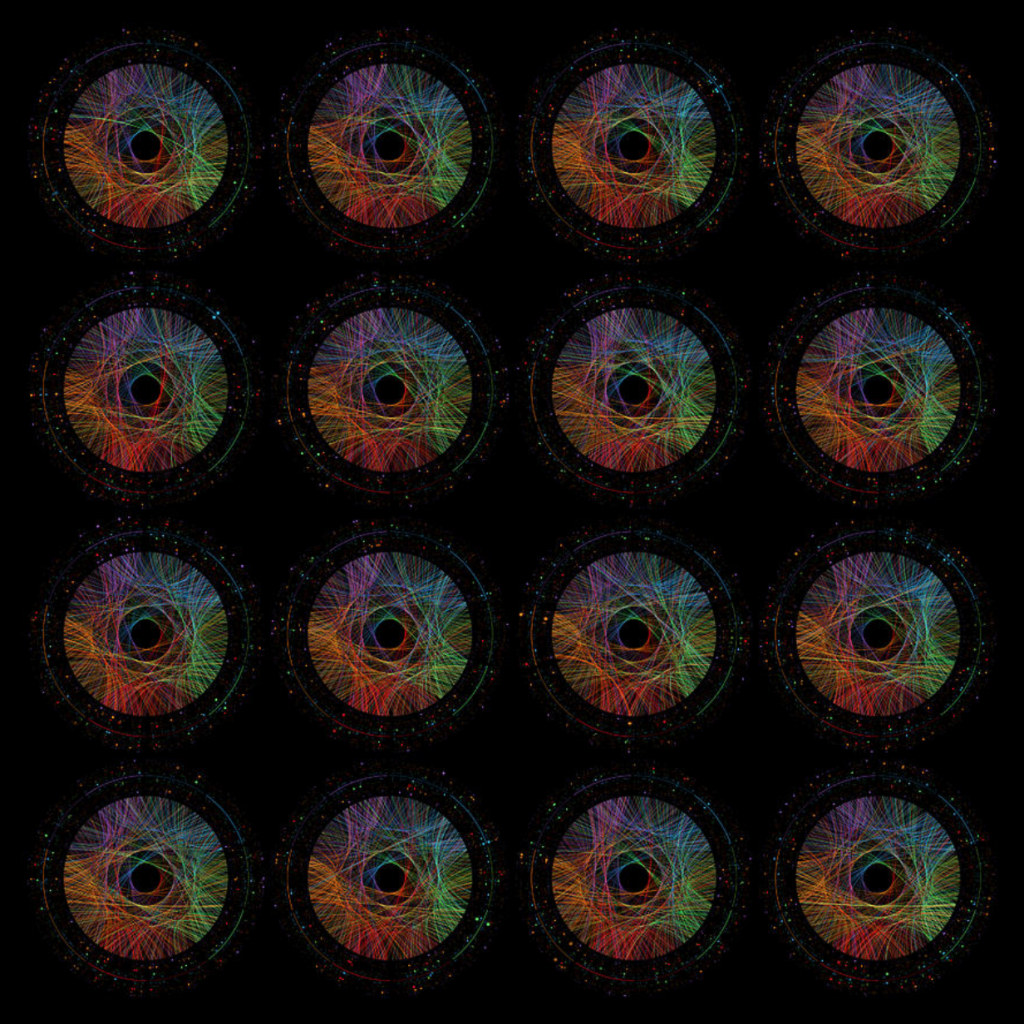Randomness. Such a broad idea in this world. Whenever I try to randomly pick numbers while filling up the lottery ticket, I close my eyes and move my hand in the air to pick a number thus trying to imitate the effect of randomness. Yet, despite the fact that I don’t see the numbers, I still feel the need to stop at some specific point. So, … maybe it’s not random after all? Just a so-called “gut feeling” or “woman intuition”?
For this Looking Outwards assignment I chose a digital art by Martin Krzywinski called “Faces of Randomness”. This project inspires me because it shows that even though all generated drawings look very similar, they’re all unique with their own random variables in algorithms. It’s very similar to humans – we all buy the same clothes, yet our personalities are all unique.
In his art, Martin Krzywinski used “sixteen random numbers with 1000 digits each represented by their digit transition paths and frequencies.” I assume Martin wrote an algorithm that generates 16 random numbers with 1000 digits each which draws random lines from one point to another and the color depends on the location of the line at the random points. Very similar to our previous project of “String Art”.
The creator’s artistic sensibilities manifest in the final form by creating a beautiful string art effect using only 16 random digits that show color transitions based on the random paths that the lines were drawn in.
I chose this project because it is very similar to what we are doing in class. In this sense, I feel some kind of connection and realization that anything is possible. Even though this idea of computer scince for design and creative usage was new to me, I was able to learn so much in such short amount of time to even understand the methods behind some computational art. And I think it’s beautiful.
https://fineartamerica.com/featured/1-faces-of-randomness-martin-krzywinski.html

![[OLD SEMESTER] 15-104 • Introduction to Computing for Creative Practice](../../../../wp-content/uploads/2023/09/stop-banner.png)